Soluciones
La gama de negocios de construcción de caballos se extiende a todo el mundo y sirve a miles de clientes con productos, orientación técnica especializada en construcción, y somos testigos del reinicio de la marca china con ellos.
Carbon fiber structural reinforcement technology is suitable for various types of structures, various structural parts of the reinforcement and repair, such as beams, slabs, columns, roof trusses, piers, bridges, cylinders, shells and other structures. The strength level of base concrete should be no less than C15. In addition, some mechanical properties of brick masonry can also be strengthened with carbon fiber.
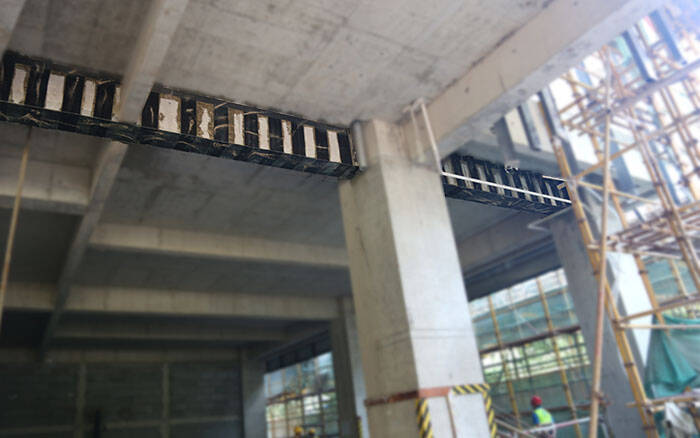
Carbon fiber reinforced polymers are made of carbon fiber bundles with high viscosity and high tensile strength. The use of carbon fiber structural reinforcement has the following advantages:
A, high strength (about 10 times the strength of ordinary steel), the effect is good.
B and strengthening can greatly improve the corrosion resistance and durability of the structure.
C. Light deadweight, basically does not increase the structure deadweight and section size; flexible, easy to cut, wide range of application;
D, simple construction (no large construction organization and turnover material), easy operation and good economy.
E. The construction period is short; therefore, the carbon fiber structural strengthening technology has produced a greater effect on the concrete structure.
Carbon fiber structural reinforcement technology is suitable for various types of structures, various structural parts of the reinforcement and repair, such as beams, slabs, columns, roof trusses, piers, bridges, cylinders, shells and other structures. The strength level of base concrete should be no less than C15. In addition, some mechanical properties of brick masonry can also be strengthened with carbon fiber.
Carbon fiber reinforced polymer used for strengthening building structures have excellent mechanical properties, and their tensile strength is generally more than ten times that of building steel. However, it is difficult for all the carbon fibers to work together when the carbon fiber material is woven into carbon fiber fabric. When the load is low, some of the carbon fibers with higher stress level reach their tensile strength first and quit working state. By analogy, the carbon fibers gradually break until the overall failure. The use of binder, the carbon fiber can work well together, greatly improving the tensile strength of carbon fiber sheet. Therefore, the carbon fiber reinforcement must first make the carbon fiber in the carbon fiber sheet work together, so the binder plays a key role in the strengthening of carbon fiber sheet. It not only ensures that the carbon fiber works together, but also ensures that the carbon fiber cloth and the structure work together, so as to achieve the purpose of strengthening.
The Baotaisong workshop of a pharmaceutical factory was built in 1984. Due to the corrosion of corrosive gas for a long time, the concrete and steel bars in the lower chord of three thin web beams were seriously corroded, which resulted in cracking, loosening and spalling of the concrete in the protective layer, corrosion and spalling of the steel bars in the lower chord, weakening of the stress section of the steel bars and endangering the safety of the structure. Through the analysis and comparison with the designers, choosing to paste carbon fiber fabric to reinforce the beam can prevent corrosive gas erosion and prolong the service life of the beam.
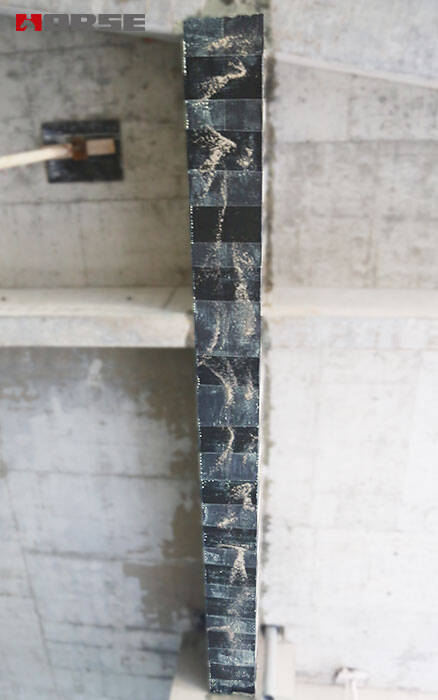
4.1 the basis of carbon fiber for structural reinforcement
The shop drawings provided by a pharmaceutical factory.
Corrosion of roof frames.
Actual strength of the buttoned thin web beam.
Technical regulations for strengthening concrete structures.
4.2 the premise of carbon fiber cloth strutrual reinforcement
First, we use rebound method to detect thin web beam concrete for reinforcement reference. After testing, the actual strength of concrete is C30.
According to the design drawings and the corrosion of concrete and steel bars on site, the tensile strength grade of the lower chord should be improved. For this purpose, the 610 mm wide T700s carbon fiber fabric is cut in half and pasted on the bottom and both sides of the lower chord in two layers (the width of the lower chord of the thin web beam is 200 mm). After reinforcement, the area of the original tension steel bar is increased by 46%, which makes up for the section reduction caused by the corrosion of the original steel bar and strengthens the bearing capacity of the members. Moreover, the overall reinforcement ratio of ρmin≤ρ≤ρmax can meet the use requirements.
4.3 design of carbon fiber for structural reinforcement
Because the width of the bottom of the beam is 200 mm and the width of CFRP is 610 mm, considering the width effect of CFRP and the tension range of the lower chord, the CFRP should be cut into two layers, one is 300 mm wide and the other is 310 mm wide. The two layers should be attached to the lower side and the two sides of the beam (the heights of the two sides are 50-55 mm). Corners should be treated with fillet (r > 20mm).
From the reinforcement to the present, after five years of time, under the corrosion of corrosive gases, so far no corrosion has been found.
Puede encontrar cualquier cosa que necesite, confíe en probar estos productos y encontrará la gran diferencia después de eso.
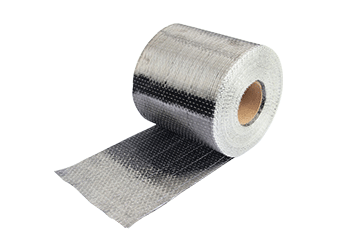
Tejido de fibra de carbono unidireccional de alta resistencia para refuerzo de compuesto de polímero reforzado con fibra (FRP).
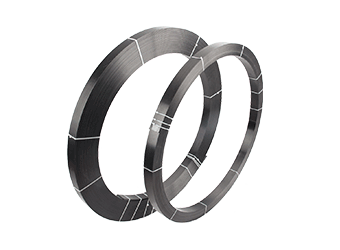
Lámina de fibra de carbono pultruída para reforzamiento de estructuras
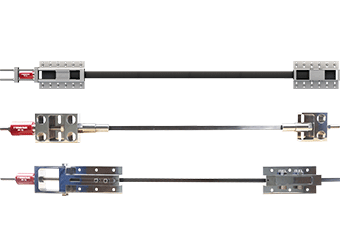
Placa / laminado / banda de polímero pretensado reforzado con fibra de carbono (CFRP) para la losa, refuerzo del haz